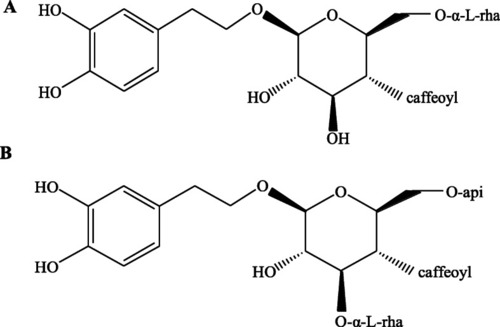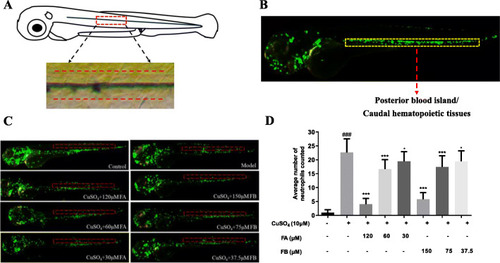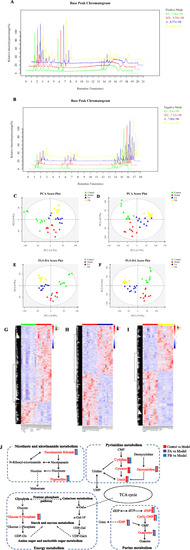- Title
-
Exploration of anti-inflammatory mechanism of forsythiaside A and forsythiaside B in CuSO4-induced inflammation in zebrafish by metabolomic and proteomic analyses
- Authors
- Gong, L., Yu, L., Gong, X., Wang, C., Hu, N., Dai, X., Peng, C., Li, Y.
- Source
- Full text @ J Neuroinflammation
|
Chemical structures of forsythiaside A ( |
|
FA and FB inhibited the migration of neutrophils to the injury site in CuSO4-treated zebrafish. |
|
FA and FB alleviated inflammation in zebrafish by inhibiting CuSO4-induced ROS and NO production. |
|
Metabolomic analyses of zebrafish larvae samples from the control, model, FA, and FB groups. Representative base peak chromatogram (BPC) of the control, model, FA, and FB groups in the positive ion mode ( |
|
Proteomic analyses of zebrafish larvae samples from the control, model, FA, and FB groups. Heat-map of differential proteins of control vs. model ( |
|
An integrated analysis of metabolomics and proteomics. The interactive network of metabolites and proteins from control vs. model ( |
|
The relative mRNA expression levels in the control, model, FA, and FB groups. |
|
The possible mechanism of CuSO4-induced inflammation in zebrafish and the action diagram of FA and FB. FA and FB administration resulted in reductions of ROS and NO, alterations of various metabolites, proteins, and gene products induced by CuSO4, thereby reducing inflammation. This diagram showed the multi-component and multi-regulatory therapeutic mechanism of FA and FB against CuSO4-induced inflammation in zebrafish |








